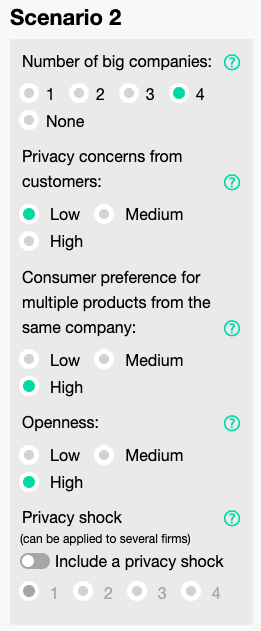
By Lawrence Kay
We built an agent based model (ABM) this year to explore the effects of data sharing on innovation in a simple economy as part of our R&D research for the UK government. But because the model is just an illustration of our ideas, we had to think hard about what we meant by innovation. It's easy to imagine innovation as just new stuff that's cooler than old stuff, but how we conceptualise it shapes the way that policy gets made.
The innovation process in the model is ‘combinatorial’, which means that new products are the result of combining what’s already known about old products. The companies in the model innovate by adding one dataset to another, perhaps creating a product that is better able to make use of available resources and meet consumer needs than products that existed beforehand.
Old knowledge, new combinations
W Brian Arthur, an economist, is credited with articulating the combinatorial nature of technology development. In his book, The Nature of Technology: What it Is and How it Evolves, he describes the myriad ways in which old knowledge is combined in new ways to create products across the economy. And as this happens, two insights become apparent: the development of new products depends on what is already known – it’s ‘path dependent’ – and widening the range of knowledge through research expands the complexity of products that an economy might be able to produce. This inevitable increase in knowledge complexity is sketched in the model by products becoming more complicated as the model runs.
Much of the excitement about the innovation possibilities of data is driven by its combinatorial potential. If datasets can be combined once, twice, and then recombined and recombined as inventors discover new possibilities, the range of products and services that an economy can produce should be wider than if information were held only in, say, printed books.
Data: standards, portability and skills
The ODI's work on data standards and portability is about reducing the friction in sharing trusted data so that the combinatorial process for creating goods and services is easier and quicker: data standards increase interoperability which makes it easier to link one dataset to another, and portability rights provide a legal route for access to data. Our research on business models for the development of artificial intelligence shows how firms can benefit from open innovation, which can increase the range of knowledge available to them and hence the complexity of the products they can produce.
But to make the most of data, companies need the skills to innovate with it. Our concept for how that happens was naturally guided by the Nobel prize-winning economist Paul Romer, and his paper that showed how human capital – the skills of workers in the economy – affects economic growth by determining how well knowledge can be profitably exploited. Graphene, a frontier material discovered at the University of Manchester in 2004, is a good example of the role of human capital: it has taken many years for the material to be commercialised, despite its potential. And that’s because firms in the economy may not have the skills available to manipulate graphene into useful products.
Romer’s description of the effects of human capital is captured in the model through companies having a level of skill in the way that they combine data. Companies that are good at combining data enjoy an increase in the usefulness of the original data, reflecting the fact that the value of a resource – like data or graphene – is determined by how well it is used.
Making innovation easier
The effects of making combinatorial innovation easier quickly reveal themselves in the outputs of our ABM – try comparing the base case that we used to test the model – a thumbnail economy in which data sharing is low and there are privacy shocks that make consumers reluctant to buy some companies’ products – to scenario two, where sharing and trust are high, with the model choices as below.

If you run those choices, you can see that the companies in the model are able to use their skills and better access to data to create lots of new products.

Have a play with our model to see how your choices affect innovation, and read about wider innovation effects in the model and how these relate to policy.